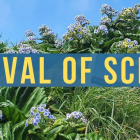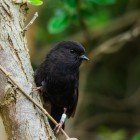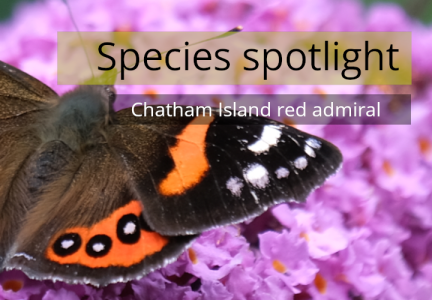
Blog and news
Species Spotlight: Chatham Island red admiral/ kahukura
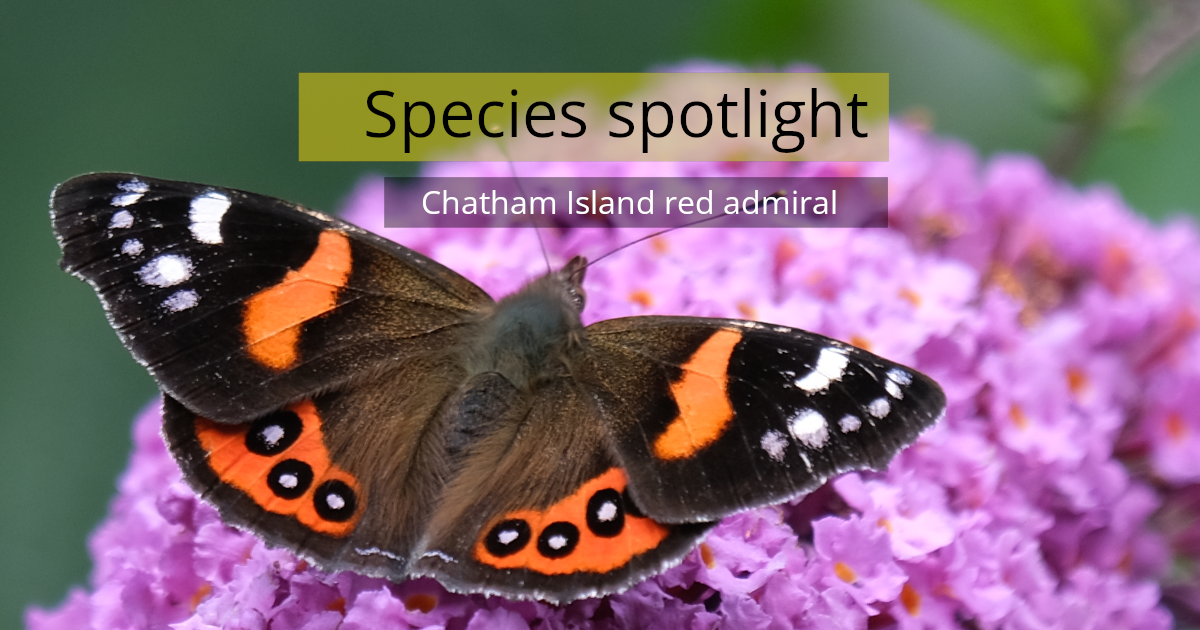
With its bright red wings, the Chatham island red admiral/ kahukura/ pūrehurehu wera is among the most known of insects on the Chatham Islands. Although it’s also found on mainland Aotearoa, it has a special place for our islands – and for PhD candidate Greer Sanger, who recently visited Rēkohu/ Wharekauri. She shared some of her favourite things about this invertebrate with us.
Their name “kahukura” means “red cloak”.
The Māori name refers to the striking red patches on this butterfly’s wings. The word “kahukura” translates to “red cloak” or “red garment.” In some traditions, "kahukura" can also refer to an atua/ god of the rainbow. While there don’t seem to be any records of a specific Moriori name, there is a record of the word “pūrehurehu” from the 1880s for butterfly (similar to the Māori word for butterfly, “pūrerehua”) and a record of the word “wera” for red. The species' Latin name is Vanessa gonerilla.
The yellow admiral butterfly (found on the mainland, but not often on the Chathams) is called “kahukōwhai.”
Kahukura feeding on a hebe. Image: Greer Sanger
There are a lot more on Rēkohu/ Wharekauri than the mainland.
“While on the Chathams, I saw them every day, which is lucky,” Greer told us. “On the mainland it’s not like that at all – you often have to go to specific hotspots where the host plant is, and even then, you may not see many. For example, on the mainland if you’re lucky you may see 10-15 in one spot. On Rēkohu, I observed over 70 on one big hebe bush, and even in scrubby areas with just a few weedy flowers you’re still likely to see them flying past.”
It's hard to know exactly what’s happening with the population, Greer says, as limited abundance sampling has been done.
On the mainland, there’s an anecdotal decline. People have stopped seeing them in some areas. An example of this is in Tāmaki Makaurau/ Auckland and Te Tai Tokerau/ Northland. It’s possible a decline of host plants and habitat is contributing to this, as well as an increase in introduced predators and competitors – like the wasp.
A lack of wasps is a likely reason for their abundance in the Chathams.
Introduced wasps are found throughout the mainland, but aren’t present in the Chatham Islands. (This is one example of why biosecurity is so important!) Vespula vulgaris, the common introduced wasp, feeds from some of the same resources as kahukura, like sap from trees.
“On the mainland, I observed butterflies crowding over a tree bleeding sap, but being constantly interrupted by wasps,” Greer said. “An area of research I want to pursue is food competition and behaviours. There are also instances on the mainland of introduced parasitoid wasps laying their eggs into butterfly pupae (chrysalises), which are consumed by the wasp larva, and what emerges from the pupa is a wasp (or sometimes many wasps) instead of a butterfly.
“On Rēkohu, a local pointed out a hakapiri/ akeake (Olearia travesiorum) tree bleeding sap, and covered with butterflies just like I’d observed on the mainland. They were all in tight groups crawling over each other, but with no wasps to compete with they could feed for a long period of time without disturbance or being attacked.”
Kahukura feeding on tree sap. Image: Greer Sanger
Kahukura caterpillars’ favourite food is the nettle.
The main host plant for kahukura caterpillars is the nettle – and it seems that any nettle species will do. There are many native nettles but also introduced ones.
One of their preferred native nettles is Urtica australis, the Chatham nettle or southern nettle. It typically has cool, big, broad leaves and grows like a small (or, in the right conditions, even large) bush. It’s found in lots of sites around Rēkohu/ Wharekauri, but usually in coastal and out-of-the-way areas – often where there is a good nitrogen source like bird droppings.
Another popular nettle is the introduced dwarf nettle. There are heaps on Rēkohu/ Wharekauri, especially on farms. According to Greer’s research on the mainland, dwarf nettles aren’t kahukura’s preferred nettle.
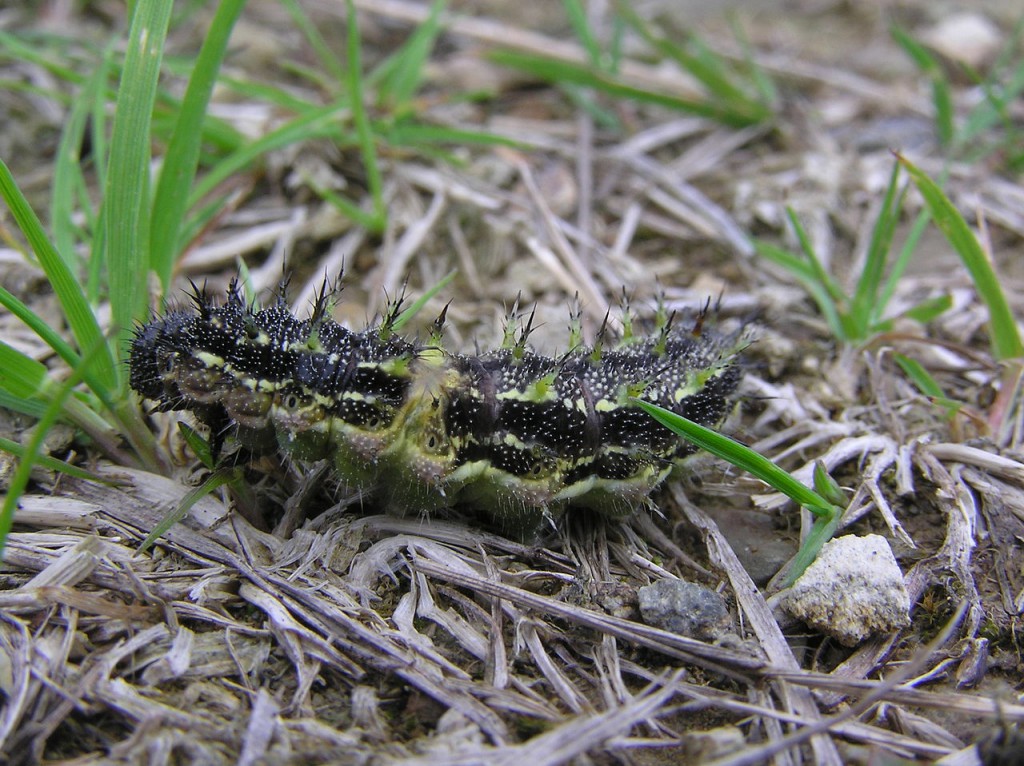
Red admiral caterpillar (not in the Chathams). Image: Tony Wills
There’s plenty to learn about this kahukura-nettle relationship.
As most people know (sometimes from painful first-hand experience!) nettles sting. But kahukura caterpillars rely on nettles for food. Just like monarch butterflies which would go extinct without swan plants, kahukura would go extinct without nettles. It’s suspected that kahukura have evolved to be immune to, or at least evolved mechanisms to tolerate, the toxins in the plant, thereby providing caterpillars with a food source and protection from predators at the same time.
It’s also speculated that caterpillars absorb some of the toxins from the nettle when they eat the plant, making them unpalatable or even poisonous to other species. This is what happens in many other butterfly species but it’s not something that’s been specifically researched for this species.
Kahukura laying eggs on a nettle in the Chathams. Image: Greer Sanger
The butterflies feed on nectar and tree sap.
The adult kahukura can feed from a lot of different flower species because they have a long proboscis. They seem to really like hebe, buddleia, rautini, and other weedy flowers you find in the scrub land on Rēkohu/ Wharekauri.
As already mentioned, they also love feeding from sap leaking from certain trees.
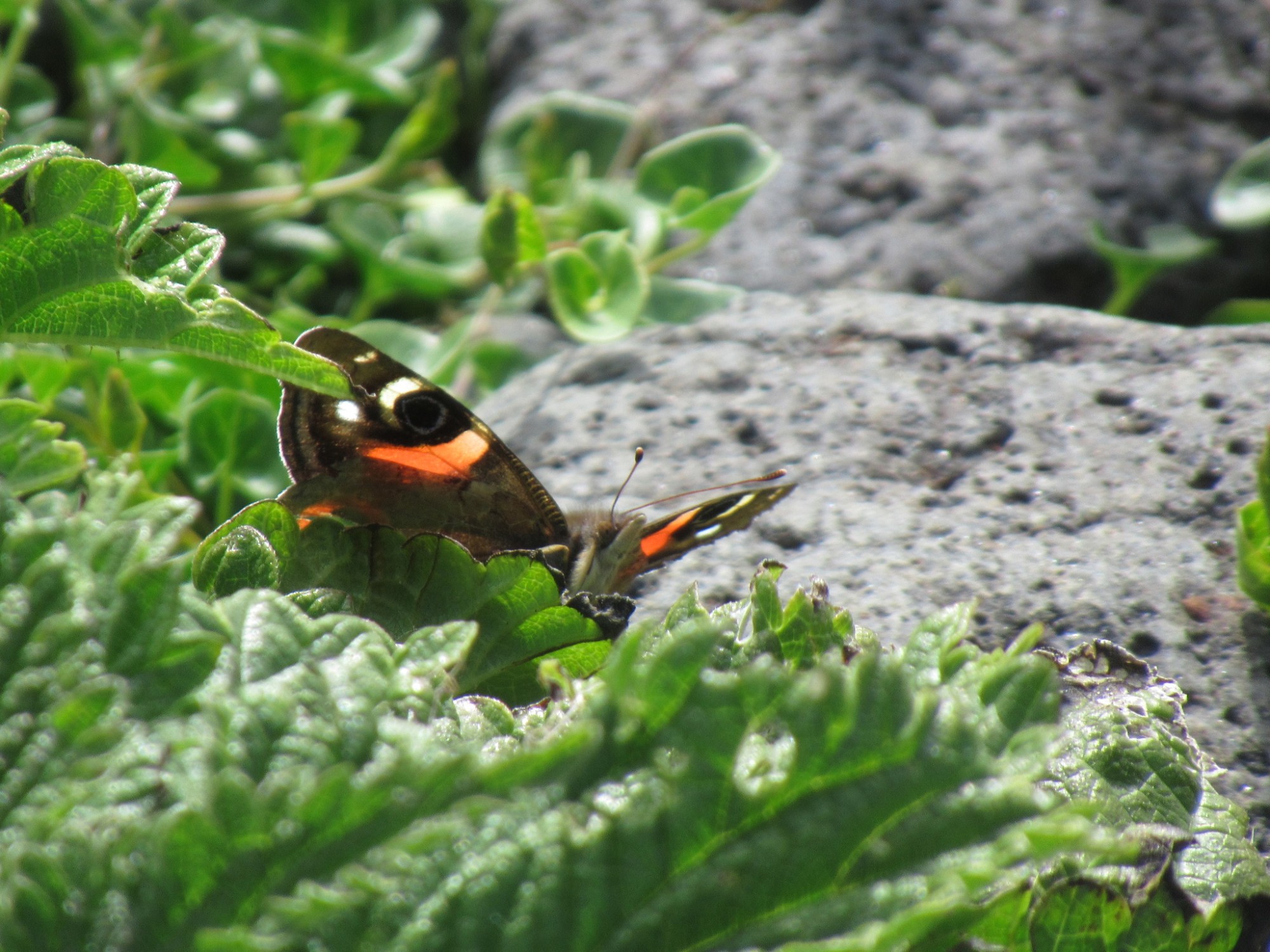
A red admiral recorded on Pitt Island. Image: iNaturalist Lloyd Esler
Help with research
Greer is working on her PhD and will be carrying out research across Aotearoa, including the Chathams, over the next few years. She would like to again thank everyone that helped with her mahi when she visited Rēkohu/ Wharekauri in January and February 2025. She is incredibly grateful to those who let her conduct research on their land and those that shared their tales with her in interviews. She looks forward to visiting again one day and sharing all the knowledge gathered with the community.
She is still searching for more people interview, so if you are interested in sharing your experiences with the pūrehurehu wera/ pūrerehua kahukura and/or the nettle please get in touch with her; she would be greatly appreciative of your help. She’s also very interested to hear of sightings on Pitt Island!
Ph: 0226449108, Email: sangr426@student.otago.ac.nz

